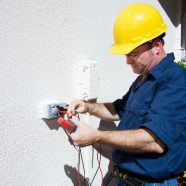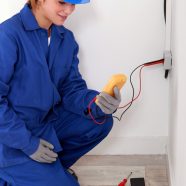Alternative Energy Trends in South Florida
About 90 percent of the power used in south Florida homes is electric, with the majority of that being created by burning coal or natural gas. The call for renewable energy sources is growing, for energy conservation as well as economic reasons. Alternative energy sources aren’t as common in south Florida as they are in other parts of the country, but installations are on the rise, revealing a brighter future for renewable energy in this part of the state.
Alternative energy isn’t just the province of new construction. Home remodels and business renovations in south Florida can be the perfect time to add an alternative, cleaner source of power to your building. Depending on your environment, you have multiple options to consider:
- Solar power can provide up to 100 percent of your daily power needs
- Wind energy is completely clean, but not as effective in this area
- Kinetic energy is a new technology with an exciting future
Solar Power
You would think that solar power in Florida would be a natural part of green building. After all, we’re known as the sunshine state. In past years, though, homeowners and business owners have been forced to pay fees to power companies even if their solar panel array produces all the power they use. In essence, everyone in the state was forced to pay for being hooked up to a power company, even if they never used it.
Today, a combination of energy conservation lobbying and financial incentives in the form of substantial tax breaks are making solar energy a better bargain for south Florida residents. While it can take years for a full panel array to pay for itself in saved energy costs, the fact that solar energy doesn’t add to greenhouse gases can tip the scales when deciding to install panels.
Wind Energy
Compared to the great plains of Kansas and Wyoming, south Florida doesn’t have a steady supply of strong winds to count on. Many wind generators are needed in a given area to produce useful amounts of electricity because of the relatively ineffective technology available. The numbers for this get more attractive for wind turbines placed over the water and on extra-high poles that catch stronger air currents, but in south Florida this is only possible for residents with large plots of land or long water frontage.
Kinetic Energy
One of the most exciting new concepts in green building for the south Florida area is using kinetic energy to produce electrical power. For residents who have property on the water, this can be a solid source to rely on in years to come. Kinetic energy power plants are small, floating machines that are anchored to the sea bed. Attached to the ground with a cable, these machines, housed in pods, bob up and down with the waves. Every time the pod goes up or down, it creates a small amount of energy that can be stored to be used later. Some brands include small water wheels that increase the electrical output, while others are simple passive systems with levers that move with the waves.
A kinetic energy production field requires multiple pods installed in the water, so it’s obviously only useful for residents with water frontage, but it’s growing in popularity in some communities for the production of municipal power as well as for individual owners.
Read MoreCost Implications of a Residential Rewiring Project in South Florida
Older homes, like many in the south Florida area, often need a complete residential rewiring to keep them safe and up to code. If your home is more than 50 years old, it’s time to consider contacting a professional electrical contractor to inspect the condition of your home’s wiring. Even if age isn’t a consideration yet, there are other signs that indicate you need to have your wiring inspected. Look for:
- A faint burning smell or sizzling sound, especially when appliances are turned on
- Circuit breakers that trip or fuses that blow on a frequent basis
- Brown discoloration on switches and outlets and the walls around them
Residential rewiring isn’t a minor job, and the cost depends on many variables. It’s a serious renovation job, but in many instances there are ways to minimize the costs.
The Home Rewiring Process
Rewiring your home involves removing all the old wiring and replacing it with newer, non-metallic wire. This new wire doesn’t get hot when surrounded with insulation, it’s easier to work with and it’s safer inside your walls.
In the most elaborate wiring jobs, electrical contractors remove the interior walls, replace all the wiring and rebuild the walls with the new wiring inside. This can take a lot of time and can be the most expensive method, as well as doing damage to older, historically significant buildings.
Contractors can replace the wiring using a series of small holes cut into the walls, along with a thin line called fish tape that draws the wire from one small hole to another. This method requires patching holes, but it keeps the integrity of older plaster walls while installing newer, safer wiring. Running wires behind existing walls can be much less expensive than replacing the walls themselves, and can save homeowners thousands of dollars in construction costs.
Residential Rewiring Costs
The price of each part of the job will vary from season to season, but it’s important to remember that many details go into the final cost. It’s not the price of the job itself as much as it is that of each individual part of the job.
Building permits are often the first item you’ll spend money on when having wiring redone. The permits will cost the same whether you or your electrical contractor pulls the permits, but your professional knows which ones you need and won’t waste money on those you don’t.
If you’ve got an older house that still has a fuse box, it will need to have a new circuit breaker installed. This can cost up to $3000, depending on the size of your home’s electrical demand load.
While you can save a bit of money reusing your old switches and outlets, you’ll still have to pay for your contractor to install them. A residential electrical south Florida contractor will charge around $100 per outlet for installation.
The most expensive materials cost is, of course, for the wiring itself. New wire can cost thousands of dollars, even for the smallest home, but it can pay off in peace of mind.
The most important item on your home rewiring job is the cost of a professional electrical contractor. Rewiring your home is never a DIY job; it takes a knowledgeable professional to safely install an electrical system that will last for decades.
Read MoreHow the Internet of Things is Changing New Home Construction
The Internet of Things (IoT) is a pretty bad name for a pretty great set of systems designed to save the average homeowner time and money. When new construction electrical plans include extra time and materials to incorporate smart home technology, it’s a smarter fit than waiting until the technology improves and the homeowner wants to retrofit. Add it into your original home plans, because this technology is only getting more popular.
What is the Internet of Things?
Call it the IoT, smart home technology, or computerized systems, it all means the same thing: a collection of appliances and devices that use wireless technology to speak to each other. This allows for easier maintenance, alerts that prevent expensive accidents, and even big savings on power and even grocery bills. Some of the more popular Internet of Things home additions are:
- Smart TVs. This is probably the most common and well-known example of the technology. Smart televisions allow you to stream movies and television shows, play games, surf the internet, and even download technology updates, right from your television screen. Some can self-diagnose a problem, and all will alert you when they need an update.
- Computerized Refrigerators. They may have seemed a huge indulgence when they first came out, but refrigerators with a computer inside actually make a lot of sense. When kept up-to-date, the inner list function can alert you when you run out of crucial grocery items, preventing wasted time and money. They can also alert you when the temperatures fluctuate, indicating a possible expensive repair problem and enabling you to get it fixed before the problem grows larger.
- Smart HVAC Systems. These environmental systems can sample the air outside and keep track of weather reports to adjust the quality of air inside your home. Electronic thermostats adjust the heating and cooling to make sure each room of your house is at the optimum temperature, no matter what time of the day. Some systems can even be segmented into room-by-room sections and adjust the temperature as needed if the rooms are occupied or empty.
- Smart Lighting. The more smart lighting you have throughout your home, the more money you’ll eventually save on maintenance costs. All electrical systems need to be regularly maintained, but with smart lighting your system can be monitored remotely, with the electrical contractor only coming out when he’s really needed.
- Security. Homes have had security systems installed for decades, but the Internet of Things makes them more accurate and responsive. They’re more able to distinguish between benign visits and criminal occurrences, and can be better embedded into your whole house system, making them more difficult for criminals to shut down.
Installing Internet of Things Technology
All IoT systems rely on wireless connections or local area networks (LANs) for communication. This means installing more robust wiring throughout the house to allow current and future connections to take place. When you compare the cost and trouble of tearing down walls and rebuilding after rewiring, there’s no question that it makes sense to incorporate this technology into new construction electrical plans. Even if you don’t think you’ll ever have any need for smart home technology, having your electrical contractor in south Florida and it makes good financial sense. Most homes are resold eventually, and having your building wired and ready for the Internet of Things can be an impressive selling point for many new buyers.
Read MoreMaintaining a Computerized Lighting System at Your Home or Business
The computerized lighting system concept is a small part of a new technology known as the Internet of Things (IoT). It’s a large group of systems that gather information from many devices, each of which has a sensor. These devices don’t really need the internet to work, as they mostly take advantage of wireless connections or over a wired LAN, or local area network. Among the many devices included in the Internet of Things are:
- Home appliances
- Building operations systems
- Production equipment
- Home or business lighting systems
Computerized Lighting Systems Advantages
The key to saving money and power on any electronic system is maintenance. Maintaining your appliances and devices on a regular basis allows you to prevent problems from happening, as well as fixing problems when they’re small and repair costs are less expensive. Electrical contractors following a traditional maintenance schedule will change bulbs, check electrical wiring, look for signs of wear, and replace parts as they wear out. This works to keep costs low and electrical systems running. But with computerized lighting systems, you can go one step further.
Because the individual parts in these systems each have a sensor that talks to other sensors in the group, your contractor has the ability to find out information about your system at a much more rapid pace. If your office lights are dimming at a certain time of the day, he can tell whether it has to do with other building systems that kick on at the same time, draining some of the available power, or if you have a light fixture that’s going to need replacing. And he can tell before he even leaves the shop, because your system will have sent an alert signal, letting him know about the problem. All without ever having to inspect your lamps and wiring.
What Your Electrician Will Look For
Electrical maintenance in south Florida is a challenge, because of all the outages we have in this area. Between older electrical systems in our communities and the high volume of electrical storms all year round, we have a higher incidence of electrical problems that most of the rest of the country. This makes it even more crucial for your electrical contractor to maintain your system on a regular basis.
A computerized system can offer a lot of useful information. Most systems can offer multiple types of information from the same system, such as hours used, power surges, and average power usage. All systems can be set to trigger an alert from multiple causes, and require a different response for each problem. Systems can automatically call your contractor and generate a work order, in effect calling in an emergency before one actually arises. They can even identify potential problems for your contractor to discuss with you, defining future work to allow you to budget accordingly.
Condition Based Management (CBM)
Having a system that calls for a repair before a problem even arises may sound like a way to increase the amount of contractor visits, but just the opposite situation actually exists. Computerized systems create a concept called condition based management, or CBM. With a CBM system in place, most regular maintenance calls are no longer necessary. Your contractor only has to come out when something’s about to go wrong, and your system will tell him when it’s happening. He’ll still repair troubles before they become large problems, and he’ll still run some checks for wiring and other equipment, but for the most part your contractor will only show up when he’s really needed.
Read MoreWhen Should My Electrical Contractor Be On Site?
Whether you’re building a new home, undertaking an electrical remodeling and renovation project or building a commercial structurer that needs commercial electrical installation, at some point, you’re probably going to need to have an electrical contractor on site.
If you have a general contractor handling the construction for you, then they’ll probably be taking care of the scheduling of trades like electrical, but if you’re still wondering when your electrical contractor should be on site (and why timing matters!) read on.
Why Timing Matters
On most projects, an electrical contractor will work as a sub-contractor, with the main or general contractor determining how the construction or remodeling process would progress.
Problems can occur when a general contractor requests that an electrical contractor be on site too early, because there are usually costs involved in having any subcontractor wait on site. If they’re not earning their money, they’re losing it! This is why it’s so important that you work with experienced contractors and sub contractors, so that there is careful planning, and those sorts of additional costs can be avoided.
If there’s a delay in getting your electrical contractor on site during a construction or renovation project, whether residential or commercial, that is a problem too. If there is wiring to be done (and there usually will be) walls and finishes cannot happen until your electrician has been on site.
Critical Timing
Every construction project is different, and there are likely to be different factors involved in determining who needs to be on site when on your new build or renovation project, but there are a few constants. These are times when you will definitely want to see your electrical contractor or their representative on your work site:
- Before quoting, your electrical contractor should do a site visit to make sure they are clear on what they are pricing.
- Shortly after your project starts, there should be a kickoff meeting, and it’s likely that your electrical contractor will be present.
- At weekly or monthly progress meetings, but usually only after their portion of the project has started.
- Once the walls are up, and the wiring and rough ins need to be in place for finishing to continue.
- At the end of your project, for final fixtures, fittings and finishing of the electrical installation.
- Any time there is a planned inspection that might include electrical.
Usually, the timing of these visits to site will be worked out by the general contractor and your electrical contractor, but if you are managing your own renovation or remodel, you might have to be more involved in the process. Make sure that there’s a clear schedule for any project, so you can limit delays.
Working Together
Good electrical contractors will be on site when you need them on site, and they’ll work together with you and your team (including construction professionals and general contractors) to get work done on an efficient time scale.
Make sure that you choose an electrical contractor that has the capacity to meet your deadlines, because in construction, like life, time often really is money, and timing can be very important to construction success. Keep communicating, and ensure that everyone is on the same page as far as scheduling, and things will go a lot smoother.
Read More





Recent Comments